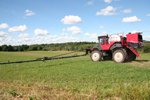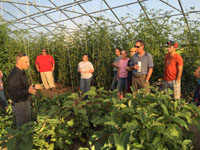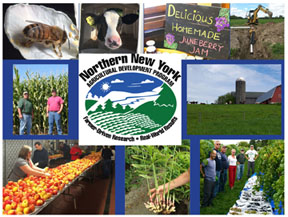
Farmers: Time to Order Bio-control Nematodes; Entrepreneurs: Start a Business to Protect Northern NY Alfalfa Crops
Northern NY: May 31, 2017. The farmer-driven Northern New York Agricultural Development Program is reminding farmers to get orders in for the bio-control nematodes that help protect alfalfa crops from the highly destructive alfalfa snout beetle. The beetle is considered the single most key factor limiting alfalfa as a key feed crop for the dairy and livestock industries in the six northernmost counties of New York State.
The nematodes are available from the Shields Lab at Cornell University, Ithaca, NY, and may be available from custom applicators who rear the nematodes following the protocol developed by Cornell entomologist Dr. Elson Shields.
Shields recommends applying the bio-control nematodes on alfalfa fields in the seeding year or first production year for best economic impact. Applications need to be made before September 1. Nematodes should be ordered from the Shields Lab at least 45 days prior to the planned application date. Contact the Shields Lab at 607-591-1493 or at28@cornell.edu for cost and details.
The Shields Lab is available to help farmers who want to rear their own nematodes on-farm. The website at www.nnyagdev.org provides a link to a guide for rearing and applying the nematodes.
Individuals interested in rearing the nematodes as a business enterprise may contact the Shields Lab for guidance. That guidance helped launch a biocontrol nematode rearing business as a new enterprise for an established custom applicator service in Franklin County.
The farmer-driven Northern New York Agricultural Development Program provided the long-term funding that supported development of the science for using two strains of native NY nematodes as a bio-control for alfalfa snout beetle in tandem with the planting of alfalfa snout beetle-resistant varieties of alfalfa developed with Program funding.
Funding for the Northern New York Agricultural Development Program is supported by the New York State Senate and administered by the New York State Department of Agriculture and Markets.
MORE INFO: Click here to learn more about the NNY agribusinesses that assisted nematode applications in 2015: www.nnyagdev.org/wp-content/uploads/2015/11/NNYADPASBagbusinessPR.pdf


 Northern NY Ag Program Receives $600,000; Economic Impact Highlighted in Annual Report
Northern NY Ag Program Receives $600,000; Economic Impact Highlighted in Annual Report